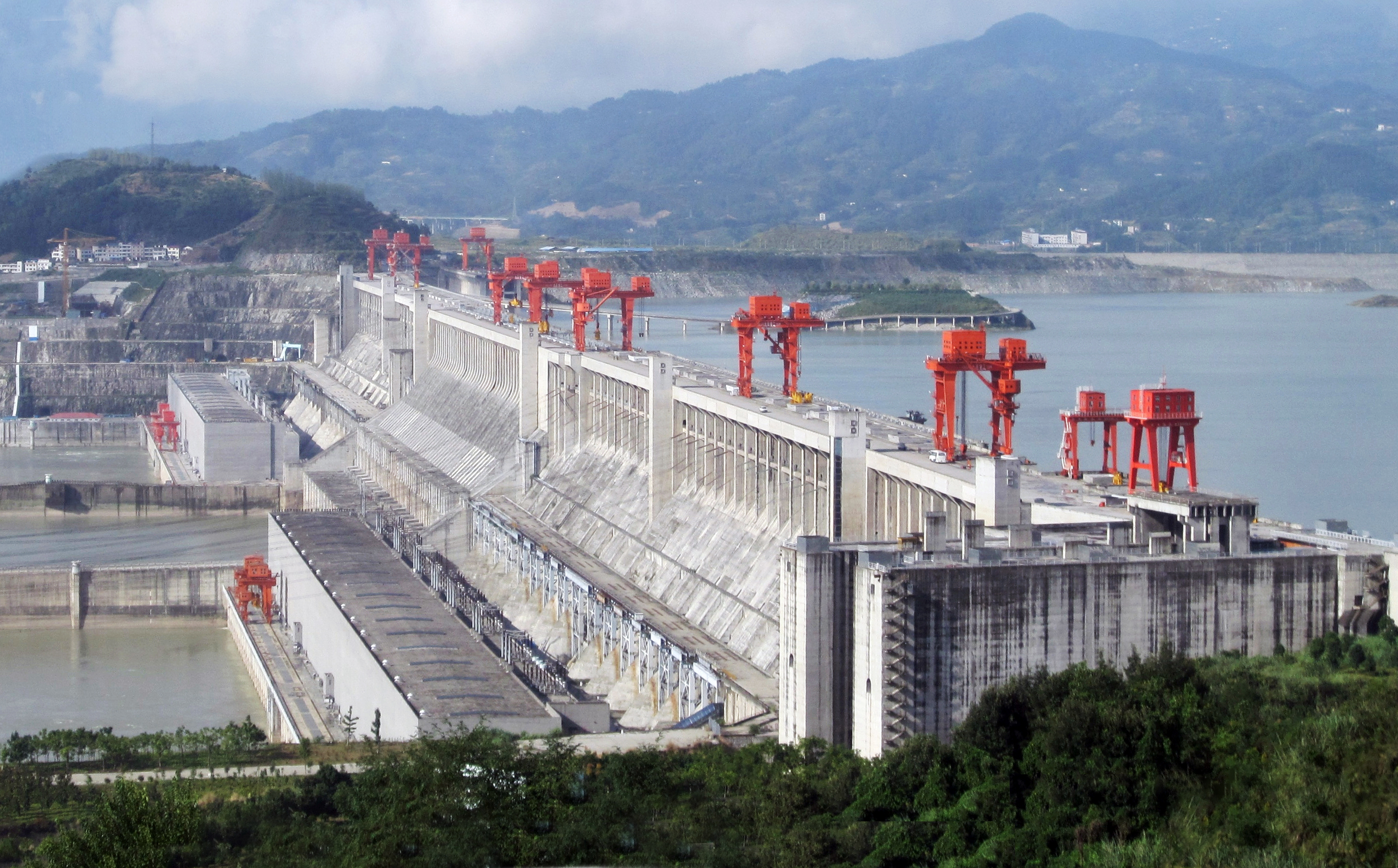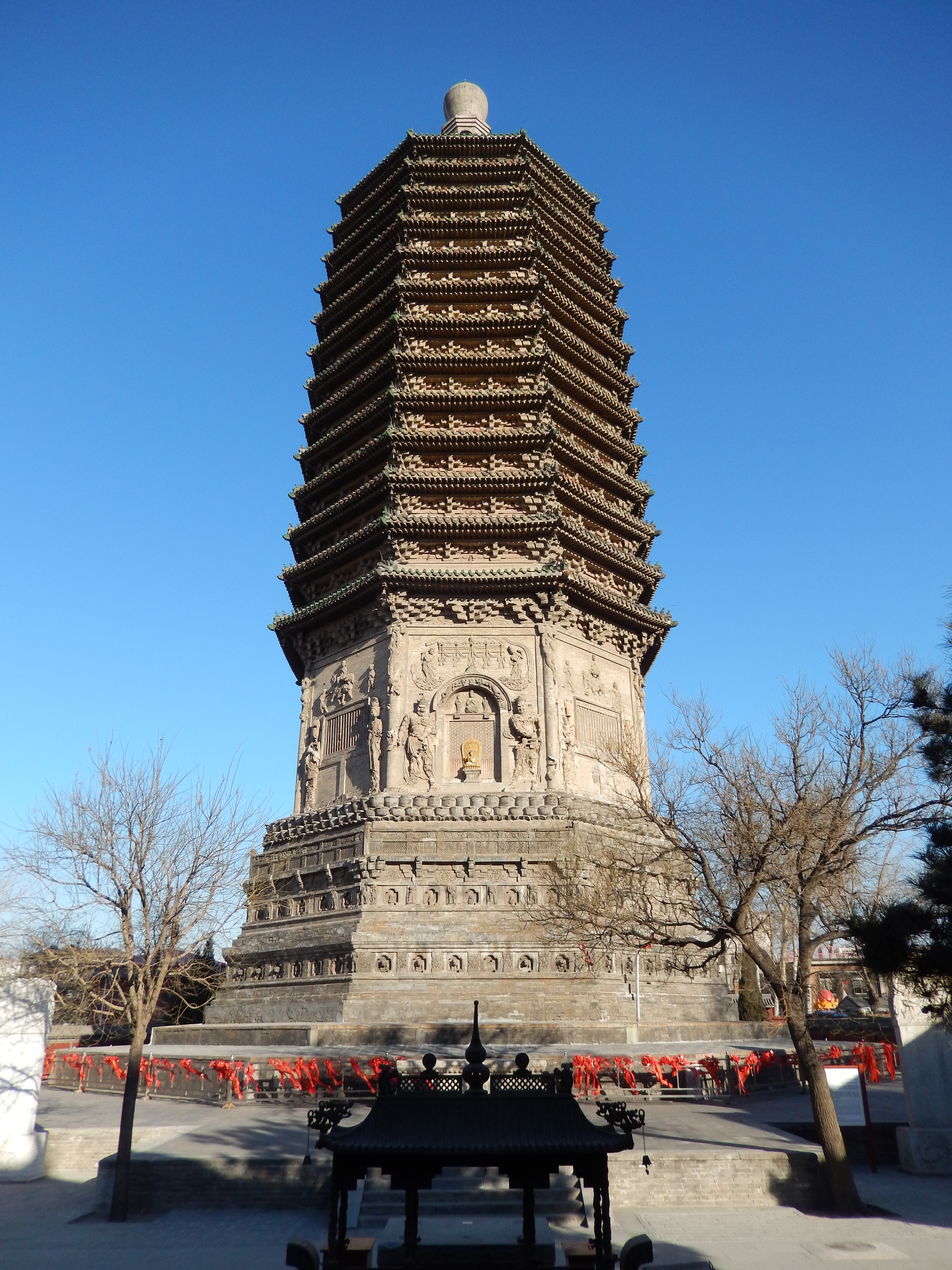|
Ahai Dam
The Ahai Dam (阿海水电站) is a gravity dam on the Jinsha River in Yulong County, Lijiang Prefecture, Yunnan and in the river reach at about 5 km in the lower reaches of Cuiyu River mouth. Preliminary construction began in 2008 and construction on the dam superstructure and power station began in 2010. The dams first generator was operational in December 2012, the third by May 2013. The fifth and final generator was commissioned on 9 June 2014. Background The dam section is a transverse valley with a water surface 60 to 150 m wide and low water level of 1048 m. The landforms on both banks are basically symmetrical. There is a measurement of about 50 m wide tableland and about 30 degrees above water surface in the left bank, and the slope in the right bank is about 27 degree and the slope above the elevation of 1500 m is about 48 degree. There is poor sand and soil materials and abundant limestone material satisfied with requirement of quality and reserves within 20 km ... [...More Info...] [...Related Items...] OR: [Wikipedia] [Google] [Baidu] |
Jinsha River
The Jinsha River (, Tibetan: Dri Chu, འབྲི་ཆུ) is the Chinese name for the upper stretches of the Yangtze River. It flows through the provinces of Qinghai, Sichuan, and Yunnan in western China. The river passes through Tiger Leaping Gorge. It is sometimes grouped together with the Lancang (upper Mekong) and Nu (upper Salween) as the ''Sanjiang'' ("Three Rivers") area, part of which makes up the Three Parallel Rivers of Yunnan Protected Areas. The river is important in generating hydroelectric power, and several of the world's largest hydroelectric power stations are on the Jinsha river. Name The river was first recorded as the Hei (, ''Hēishuǐ'', lit. "Blackwater") in the Warring States' "Tribute of Yu". It was described as the Sheng ( t , s , ''Shéngshuǐ'', "Rope River") in the Han-era Classic of Mountains and Seas. During the Three Kingdoms, it was known as the Lu ( t , s , ''Lúshuǐ''). Owing to earlier romanization sys ... [...More Info...] [...Related Items...] OR: [Wikipedia] [Google] [Baidu] |
Institute For Public & Environmental Affairs
An institute is an organisational body created for a certain purpose. They are often research organisations (research institutes) created to do research on specific topics, or can also be a professional body. In some countries, institutes can be part of a university or other institutions of higher education, either as a group of departments or an autonomous educational institution without a traditional university status such as a "university institute" (see Institute of Technology). In some countries, such as South Korea and India, private schools are sometimes referred to as institutes, and in Spain, secondary schools are referred to as institutes. Historically, in some countries institutes were educational units imparting vocational training and often incorporating libraries, also known as mechanics' institutes. The word "institute" comes from a Latin word ''institutum'' meaning "facility" or "habit"; from ''instituere'' meaning "build", "create", "raise" or "educate". ... [...More Info...] [...Related Items...] OR: [Wikipedia] [Google] [Baidu] |
Gravity Dams
A gravity dam is a dam constructed from concrete or stone masonry and designed to hold back water by using only the weight of the material and its resistance against the foundation to oppose the horizontal pressure of water pushing against it. Gravity dams are designed so that each section of the dam is stable and independent of any other dam section. Characteristics Gravity dams generally require stiff rock foundations of high bearing strength (slightly weathered to fresh), although in rare cases, they have been built on soil foundations. The bearing strength of the foundation limits the allowable position of the resultant force, influencing the overall stability. Also, the stiff nature of the gravity dam structure is unforgiving to differential foundation settlement, which can induce cracking of the dam structure. Gravity dams provide some advantages over embankment dams, the main advantage being that they can tolerate minor over-topping flows without damage, as the concre ... [...More Info...] [...Related Items...] OR: [Wikipedia] [Google] [Baidu] |
Energy Infrastructure Completed In 2014
In physics, energy (from Ancient Greek: ἐνέργεια, ''enérgeia'', “activity”) is the quantitative property that is transferred to a body or to a physical system, recognizable in the performance of work and in the form of heat and light. Energy is a conserved quantity—the law of conservation of energy states that energy can be converted in form, but not created or destroyed. The unit of measurement for energy in the International System of Units (SI) is the joule (J). Common forms of energy include the kinetic energy of a moving object, the potential energy stored by an object (for instance due to its position in a field), the elastic energy stored in a solid object, chemical energy associated with chemical reactions, the radiant energy carried by electromagnetic radiation, and the internal energy contained within a thermodynamic system. All living organisms constantly take in and release energy. Due to mass–energy equivalence, any object that has mass when ... [...More Info...] [...Related Items...] OR: [Wikipedia] [Google] [Baidu] |
Dams Completed In 2012
A dam is a barrier that stops or restricts the flow of surface water or underground streams. Reservoirs created by dams not only suppress floods but also provide water for activities such as irrigation, human consumption, industrial use, aquaculture, and navigability. Hydropower is often used in conjunction with dams to generate electricity. A dam can also be used to collect or store water which can be evenly distributed between locations. Dams generally serve the primary purpose of retaining water, while other structures such as floodgates or levees (also known as dikes) are used to manage or prevent water flow into specific land regions. The earliest known dam is the Jawa Dam in Jordan, dating to 3,000 BC. The word ''dam'' can be traced back to Middle English, and before that, from Middle Dutch, as seen in the names of many old cities, such as Amsterdam and Rotterdam. History Ancient dams Early dam building took place in Mesopotamia and the Middle East. Dams were used ... [...More Info...] [...Related Items...] OR: [Wikipedia] [Google] [Baidu] |
Dams On The Jinsha River
The Jinsha River (, Tibetan: Dri Chu, འབྲི་ཆུ) is the Chinese name for the upper stretches of the Yangtze River. It flows through the provinces of Qinghai, Sichuan, and Yunnan in western China. The river passes through Tiger Leaping Gorge. It is sometimes grouped together with the Lancang (upper Mekong) and Nu (upper Salween) as the ''Sanjiang'' ("Three Rivers") area, part of which makes up the Three Parallel Rivers of Yunnan Protected Areas. The river is important in generating hydroelectric power, and several of the world's largest hydroelectric power stations are on the Jinsha river. Name The river was first recorded as the Hei (, ''Hēishuǐ'', lit. "Blackwater") in the Warring States' "Tribute of Yu". It was described as the Sheng ( t , s , ''Shéngshuǐ'', "Rope River") in the Han-era Classic of Mountains and Seas. During the Three Kingdoms, it was known as the Lu ( t , s , ''Lúshuǐ''). Owing to earlier romanization sys ... [...More Info...] [...Related Items...] OR: [Wikipedia] [Google] [Baidu] |
Dams In China
Dams and reservoirs in China are numerous and have had a profound effect on the country's development and people. According to the World Commission on Dams in 2000, there were 22,104 dams over the height of operating in China. Of the world's total large dams, China accounts for the most – of them; of which are used for irrigation. Accordingly, the oldest in China still in use belongs to the Dujiangyan Irrigation System which dates back to 256 BC. In 2005, there were over 80,000 reservoirs in the country and over 4,800 dams completed or under construction that stands at or exceed in height. As of 2007, China is also the world's leader in the construction of large dams; followed by Turkey, and Japan in third. The tallest dam in China is the Jinping-I Dam at , an arch dam, which is also the tallest dam in the world. The largest reservoir is created by the Three Gorges Dam, which stores 39.3 billion m3 (31,900,000 acre feet) of water and has a surface area of . Three Gorges is al ... [...More Info...] [...Related Items...] OR: [Wikipedia] [Google] [Baidu] |
Hydroelectric Power Stations In Yunnan
Hydroelectricity, or hydroelectric power, is electricity generated from hydropower (water power). Hydropower supplies one sixth of the world's electricity, almost 4500 TWh in 2020, which is more than all other renewable sources combined and also more than nuclear power. Hydropower can provide large amounts of low-carbon electricity on demand, making it a key element for creating secure and clean electricity supply systems. A hydroelectric power station that has a dam and reservoir is a flexible source, since the amount of electricity produced can be increased or decreased in seconds or minutes in response to varying electricity demand. Once a hydroelectric complex is constructed, it produces no direct waste, and almost always emits considerably less greenhouse gas than fossil fuel-powered energy plants. [...More Info...] [...Related Items...] OR: [Wikipedia] [Google] [Baidu] |
Jinanqiao Dam
The Jinanqiao Dam or Jin'anqiao Dam (, ''meaning "golden and peace bridge"'') is a concrete gravity dam on the Jinsha River southeast of Lijiang City in Yunnan Province, China. The purpose of the dam is hydroelectric power production and flood control. Construction The Jinanqiao project was approved in August 2003 and construction began in 2005. By December of that year, the river was diverted and the construction of the actual dam began in January 2006. By February 2007, the foundation had been excavated and concrete pouring began. In June 2010, the dam's first generator was operational, the last was commissioned in 2011. Design The dam is a tall and long gravity dam composed of of roller-compacted concrete. The dam's crest elevation is above sea level and it withholds a reservoir with a normal storage level of ASL. Of the reservoir's storage, is active or "useful". The dam's spillway consists of five x openings which have a maximum flood discharge capacity of . To pre ... [...More Info...] [...Related Items...] OR: [Wikipedia] [Google] [Baidu] |
List Of Power Stations In China
The following page lists some power stations in mainland China divided by energy source and location. Coal Nuclear Hydroelectric Solar Tide Wind By location The following pages list the major power stations in China by province: * List of major power stations in Anhui * List of major power stations in Beijing * List of major power stations in Chongqing * List of major power stations in Fujian province * List of major power stations in Gansu * List of major power stations in Guangdong * List of major power stations in Guangxi * List of major power stations in Guizhou * List of major power stations in Hainan province * List of major power stations in Hebei province * List of major power stations in Heilongjiang * List of major power stations in Henan province * List of power stations in Hong Kong * List of major power stations in Hubei province * List of major power stations in Hunan province * List of major power stations in Inner Mongolia ... [...More Info...] [...Related Items...] OR: [Wikipedia] [Google] [Baidu] |
List Of Conventional Hydroelectric Power Stations
This article lists hydroelectric power stations that generate power using the conventional dammed method. This list includes power stations that are larger than in maximum net capacity, and are operational or under construction. Those power stations that are smaller than , or those that are only at a planning/proposal stage may be found in regional lists, listed at the end of the page. The largest hydroelectric power station is the Three Gorges Dam in China, rated at in total installed capacity. After passing on 7 December 2007 the mark of the Itaipu Dam, the facility was ranked as the largest power-generating facility ever built. The dam is high, long and in width. Power is generated by 32 turbines rated at , and two turbines rated , which are used to power the facility itself. Construction of this dam commenced in 1994, and was completed in 2012, nearly two decades after it started. The next six largest dams after the Three Gorges Dam are the Itaipu Dam, Xiluodu Dam, Bel ... [...More Info...] [...Related Items...] OR: [Wikipedia] [Google] [Baidu] |
Beijing
} Beijing ( ; ; ), alternatively romanized as Peking ( ), is the capital of the People's Republic of China. It is the center of power and development of the country. Beijing is the world's most populous national capital city, with over 21 million residents. It has an administrative area of , the third in the country after Guangzhou and Shanghai. It is located in Northern China, and is governed as a municipality under the direct administration of the State Council with 16 urban, suburban, and rural districts.Figures based on 2006 statistics published in 2007 National Statistical Yearbook of China and available online at archive. Retrieved 21 April 2009. Beijing is mostly surrounded by Hebei Province with the exception of neighboring Tianjin to the southeast; together, the three divisions form the Jingjinji megalopolis and the national capital region of China. Beijing is a global city and one of the world's leading centres for culture, diplomacy, politics, finance, busi ... [...More Info...] [...Related Items...] OR: [Wikipedia] [Google] [Baidu] |





